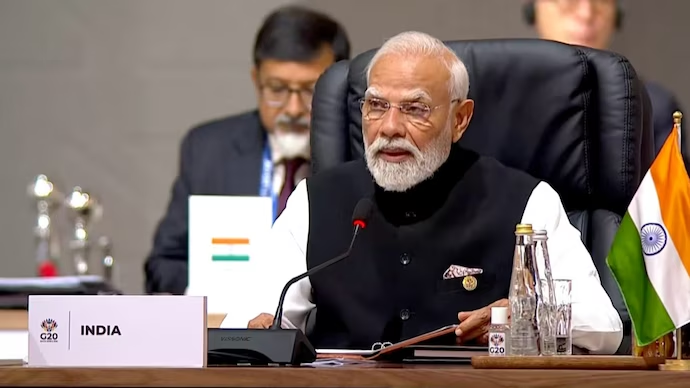Last October, welcoming Chinese President Xi Jinping at Mahabalipuram, Prime Minister Narendra Modi said he hoped their informal summit would “further strengthen ties between India and China.” On Friday, he stood in Ladakh, near the Line of Actual Control, and cautioned, in a clear reference to Beijing, against the forces of its expansionism.
The contrast couldn’t have been more stark. And yet there was no mistaking the echo — of his own words from Tokyo on September 1, 2014, during his first bilateral visit to Japan as Prime Minister, four months after taking charge.

Addressing a luncheon attended by Japanese and Indian industrialists, Modi said: “Today, we see all around what happened in the 18th century… there is expansionism visible… kisi desh mein encroachment karna, kahin samundar mein ghus jaana, kabhi kisi desh ke andar ja kar kabza karna… in cheezon ki pravritti chal rahi hai (some country is encroached upon, one enters the seas somewhere, sometimes go inside a country and capture territory, we are witnessing such tendencies).”
“This expansionism cannot be beneficial for mankind in the 21st century… development is essential and I believe that in the 21st century, if Asia is to lead the world, India and Japan should together raise the prestige of the path of development.”
This theme, of expansionism versus development, was one of his key themes today. If in Ladakh he said that the era of expansionism is over and development is the engine of the future, in Tokyo, he had foreshadowed this.
“The world is divided into two streams… one of Vistaarvaad (expansionism) and the other of Vikasvaad (development). Vikasvaad is the way ahead,” he had said in Tokyo. “We have to decide whether we want the world to be caught in the clutches of expansionism or…on the path of development. Those who follow the path of peace, those who believe in development, they guarantee peace and progress.”
These words were evidently too close to the bone in Beijing and days later, came the standoff in Chumar which coincided with Chinese President Xi Jinping’s visit. The standoff, sources said, was resolved only after Modi raised the issue with Xi.
With the death of 20 soldiers, the current face-off is more intense and fractious than Chumar and signs of a resolution still not visible. So the fact that Modi landed in Ladakh, unannounced, is, in itself, a message. As is the upgrading of the first political executive’s visit to the troops amid the standoff – Defence Minister Rajnath Singh was scheduled to go.
Coming even as diplomatic and military talks are on, the PM’s move sought to underline to Beijing the seriousness of his message from India.
Not once did Modi name China but twice he referred to the sacrifice of Indian soldiers in the Galwan Valley – Beijing has staked claimed to all of it. By framing the threat of its expansionism as an antiquated last-century idea that threatened peace, by invoking World Wars and peace missions, he not only reinforced his Tokyo message to Beijing but this time to global powers, too.
Invoking Lord Krishna from Mahabharata – through his references to ‘Bansuridhari’ and ‘Sudarshan Chakradhari’ – Modi reinforced the message that India stands for peace but will not hesitate if there’s a confrontation, if its hand of friendship is misread as weakness.
His remark that “strength is a pre-condition” for peace also sought to assert that India will continue to upgrade its infrastructure along the LAC and keep adding to its military strength. His “veer bhogya vasundhara” remark was a clear underlining of the principle that India will talk from a position of strength.
The Prime Minister’s Friday’s speech also sought to clear the confusion created by his remarks at the all-party meeting.

On June 17, he had said, in a meeting with Chief Ministers, that the sacrifice of soldiers would not go in vain. Then, two days later, came the cryptic remark that raised more questions.
“Neither has anyone entered our boundary there, nor is anyone there, and nor have our posts been captured by someone. Our 20 soldiers have been martyred in Ladakh, but before dying they taught a lesson to those who dared to cast an eye on our motherland,” he had said.
The death of the soldiers cast a shadow on a significant section of Modi’s speech as he focused on the nation’s gratitude to them. His reference to Galwan, Rezang La and Kargil linked the current standoff to earlier ones to underline that it was the sacrifice of soldiers and their being a “shield” that had secured and protected the nation. “The enemies of India have seen your fire and fury,” PM Modi said.














